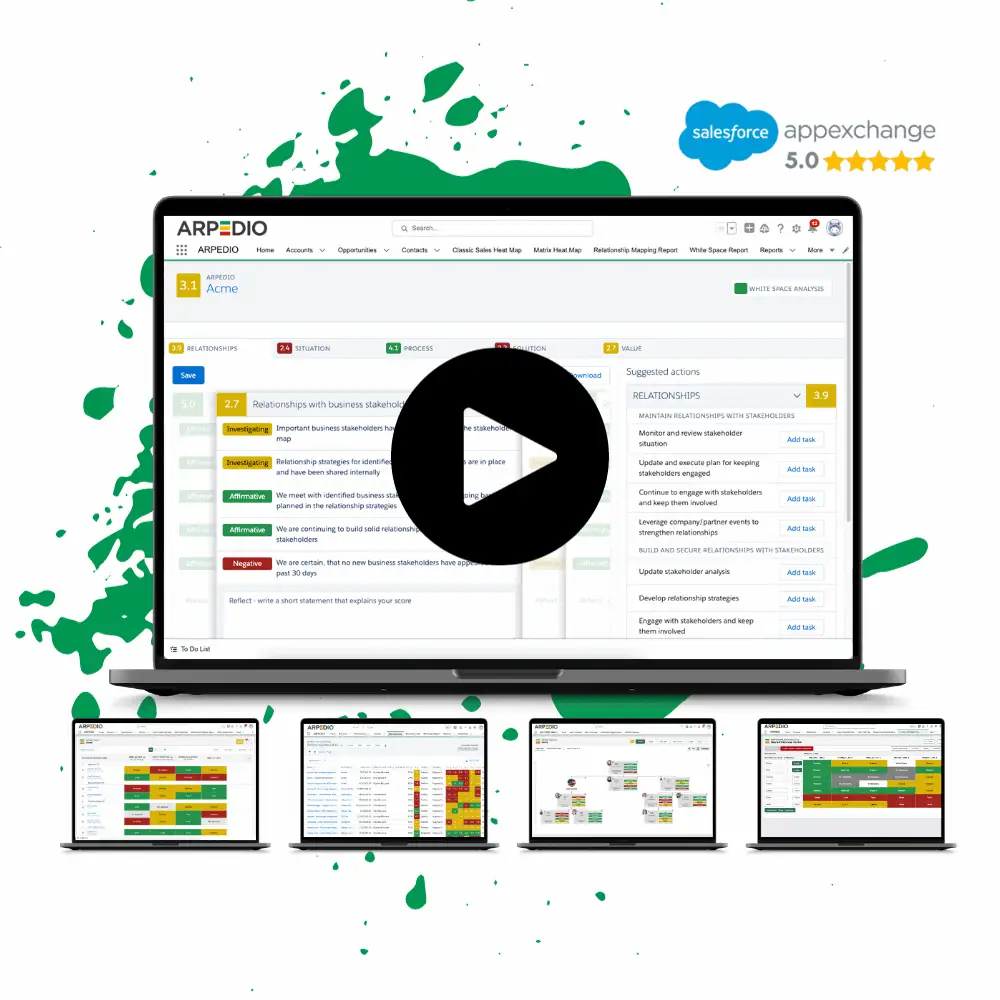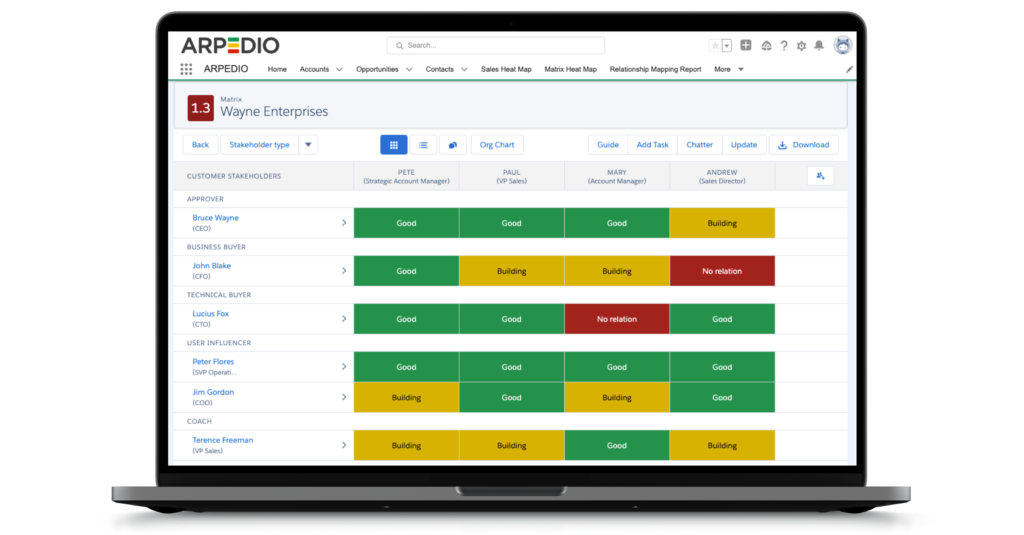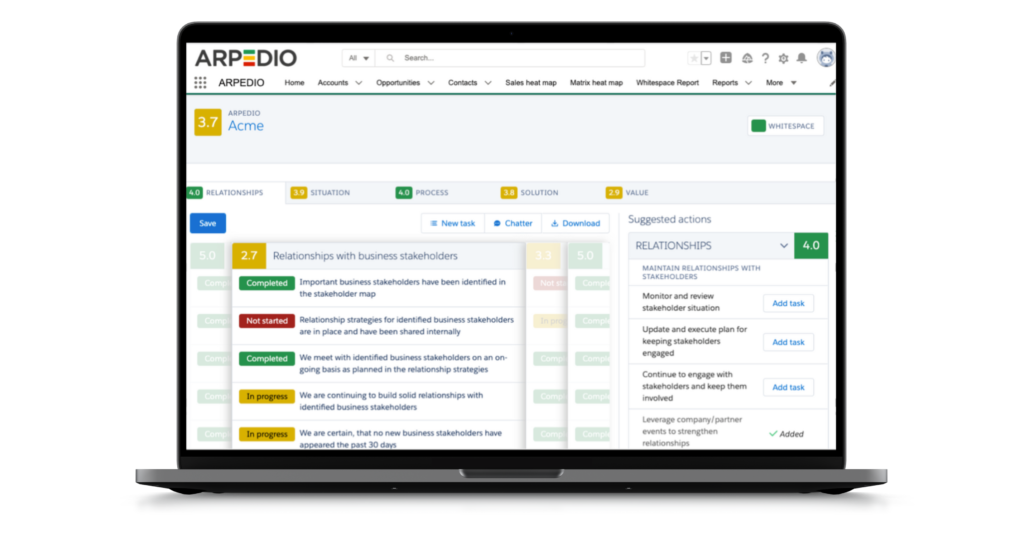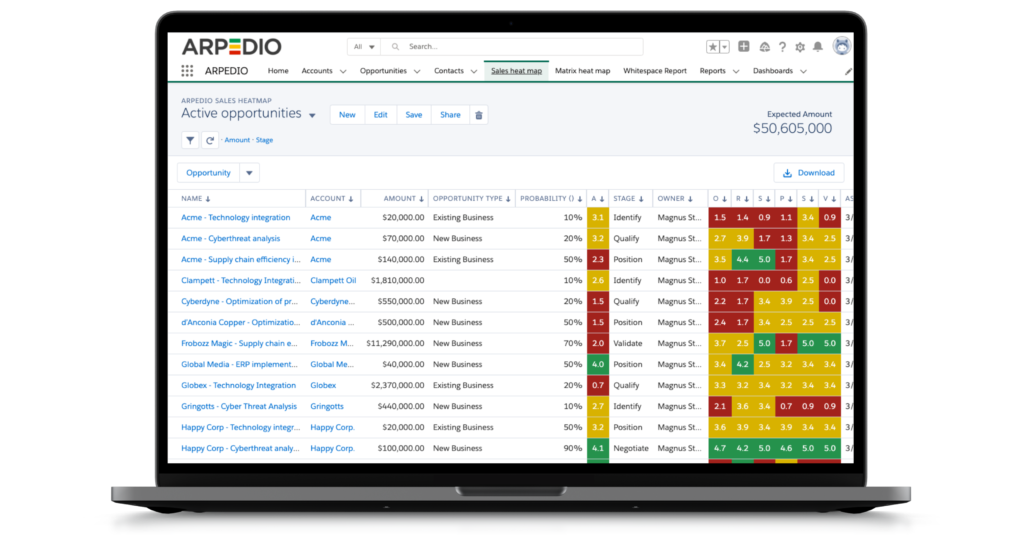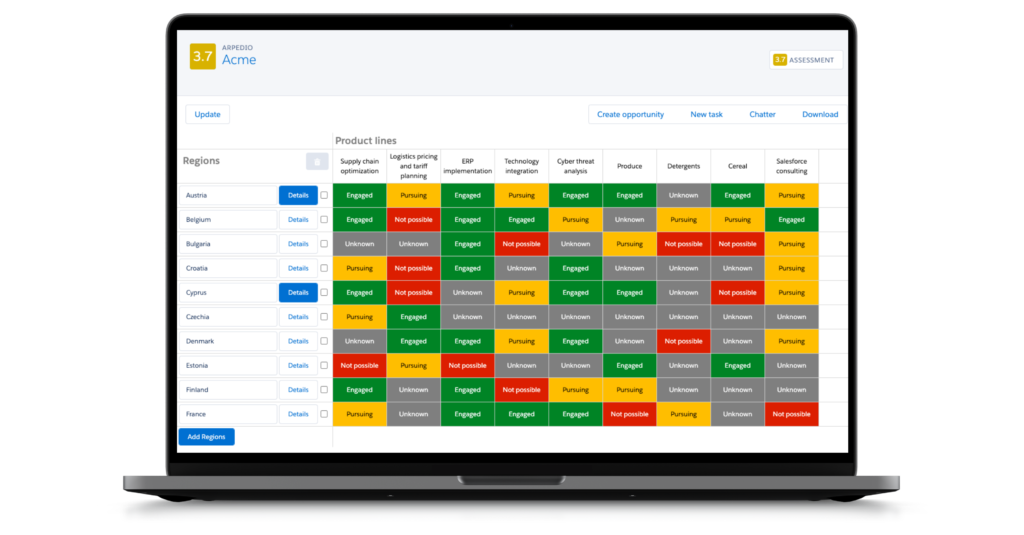In the ever-evolving sales ecosystem, businesses are continuously embracing new approaches to stay ahead of the competition. While account-based selling is familiar to most sales teams, and marketers understand the significance of targeted campaigns, there is still ambiguity surrounding the implementation of ABM and ABS programs across an organization as a whole. Read this blog post for an insightful overview of the essential elements of ABM and ABS and how they complement each other.
Table of Contents
An Introduction to Account-Based Marketing and Account-Based Selling
There’s a good chance that you’re already familiar with account-based marketing. It’s possible that your Marketing team has embraced ABM in the past few years, or they could be currently exploring the most optimal methods to implement it.
Account-based selling on the other hand is less mainstream – even though it’s by no means a new phenomenon. Nevertheless, account-based selling is skyrocketing in popularity these days with mentions from e.g. Gartner and Forrester.
Now, what is it with these two strategies? Why do we (desperately) need them? And what is it about them that makes them such a good fit? We’ll tell you, but first things first: What’s the purpose? While the main goal of account-based marketing is to generate leads for Sales, account-based selling aims to convert these leads into paying customers. ABM is usually led by Marketing, and ABS is often a cooperative effort between Marketing and Sales. You can say that account-based selling takes over where account-based marketing ‘finishes’, but there’s no doubt that the two work best hand-in-hand.
So why is it that we need both account-based marketing and sales? ABM is great for ‘shaking the trees’ and identifying interest at selected accounts, but it can’t do the job alone…It takes a collaborative effort with Sales to actually land the account. And this is where account-based selling comes into play: ABS brings the human touch to the table in terms of personalization and consensus-building, taking the client additional steps closer to the finish line.
You can think of it like this: Marketing creates the initial demand and interest after which account-based selling activities take over to build relationships, engagement and consensus among the stakeholders involved in the buying decision.
Bottom line, account-based marketing and account-based selling are like peanut butter and jelly: They can–of course–be eaten separately, but is there really any point when they complement each other SO well?
In the following sections, we’ll dive specifically into both account-based marketing and sales and explore the key components that make up each strategy.
What is Account-Based Marketing (ABM)?
In traditional marketing, the success of a campaign is typically measured by the number of leads generated. However, a significant limitation of this approach is that the majority of these leads often fail to convert into profitable relationships. With Account-Based Marketing (ABM), the emphasis shifts towards tracking the progress of target accounts throughout the sales cycle. In other words, ABM focuses on quality over quantity. Below are the three fundamental components of a prosperous ABM strategy.
The key components of Account-Based Marketing
- Identify your target accounts
When you determine the most ideal target accounts, consider the following: A) which accounts have the potential to generate the highest revenue, B) to what extent will your products or services align with their needs, and C) which accounts do you foresee will be quick(er) to reach a purchase decision. - Leverage multichannel engagement
Once you have identified the most promising accounts to go after, your next action is to initiate engagement across multiple channels. Channels worth mentioning include emails, ad targeting, web personalization, events, and really any channel that your potential customers might engage in. - Measure the effectiveness of your ABM strategy
Under traditional marketing methods, success is typically assessed by examining metrics such as the overall customer count, the number of booked demos, the cost per acquisition, and the total number of leads. However, in the context of Account-Based Marketing (ABM), the focus shifts to different indicators. These include the speed of identifying potential customers, the duration it takes for them to progress through the sales cycle, the actual conversion rate, and the average deal size.
What is Account-Based Selling (ABS)?
Account-based selling, or ABS, takes over the target accounts that marketing identified and engaged in their ABM initiatives and starts the journey of developing them into revenue-generating opportunities. And while ABM is predominantly a task for the Marketing team, ABS is a joint effort between sales and marketing. Below are the four most important components of ABS that will ensure a successful outcome of your ABS efforts.
The key components of Account-Based Selling
- Identify your ICP (Ideal Customer Profile)
When determining your Ideal Customer Profile (ICP), take into account various elements such as the industry, company size, geographic location, integration compatibility of your offerings with your customer’s existing tools, and specific challenges they face. - Locate the decision makers
It’s not sufficient to work with a single point of contact, when you’ve put your money on an ABS strategy. Instead, you need to identify the proper roles and responsibilities of the personas you’re targeting within an account, i.e., sales managers, sales reps, CEOs, account executives etc., and target these specifically to speed up the decision making process. - Personalize your approach
When sales reps are able to personalize content, you’ll see a significant increase in conversions. ABS can help you tailor these individualized approaches to specifically address the interests and pain points of the critical decision makers you’re talking to. - Create and follow a structured action plan
How and when you reach out (calls, emails, etc.) should be carefully organized in an activity plan. This will allow you to track how far you are in your approach and how your efforts are progressing. When following an action plan, you’ll also be able to see what worked well and what didn’t lead to the desired outcome, enabling you to adjust your approach accordingly for future accounts.
The Key Differences Between Account-Based Marketing and Account-Based Selling
We’ve already established that account-based marketing (ABM) and account-based selling (ABS) are two strategies that companies employ to drive revenue in the B2B space. However, while both share the ultimate goal of generating revenue, they also differ in some central areas. Keep reading for the key differences between ABM and ABS.
- Focal Point: ABM and ABS have distinct primary focuses. ABS centers solely on revenue generation, while ABM places a strong emphasis on lead identification, ultimately driving revenue for the business. Both teams need to communicate effectively and pursue leads to achieve the shared goal of revenue generation.
- Operational Approach: ABM focuses on manipulating data and solidifying leads, gathering information about potential audiences and clients to convert them into current clients. ABS, on the other hand, aims to maintain and satisfy existing clients, reinforcing revenue.
- Target Alignment: ABM and ABS can work together towards the same targets using audience data. However, effective communication is crucial to avoid duplicating efforts and ensure clients receive appropriate services. ABS should avoid treating existing clients as if they are new leads, as this could negatively impact their perception of the team.
- Communication Strategies: ABM reaches out to potential and past targets, emphasizing how the company can assist them, while ABS ensures existing clients do not receive repetitive welcome messages but rather receive personalized and relevant communication. In essence, ABS communication primarily revolves around maintaining ongoing client relationships, regularly checking in on their needs, and identifying any requirements they may have for future services.
- Collaborating for Large Accounts: When ABM identifies large target accounts with significant revenue potential, both teams must collaborate closely. ABM promotes through ad targeting and web personalization, while ABS generates email communication and leverages social media channels to convert the target into an active client.
Both teams play vital roles in B2B revenue generation. While their operations and goals share similarities, it is crucial for them to work cohesively, ensuring each team can carry out their tasks effectively to strategize and maximize overall company success.
How to Get Started with Account-Based Marketing and Account-Based Selling
Implementing account-based marketing and sales can pave the way for success and foster business growth, making it an ideal strategy for your organization. While the implementation of ABM and ABS may appear daunting, you can kick-start the process by taking a few immediate steps.
Step 1: Define Target Accounts
Identify the key target accounts that align with your business objectives and have the potential for high-value partnerships or sales.
Step 2: Align Sales and Marketing Teams
Ensure close collaboration and alignment between the sales and marketing teams to create a unified approach. Establish shared goals, strategies, and metrics to drive effective ABS and ABM efforts.
Step 3: Account Research and Segmentation
Conduct thorough research on the identified target accounts to understand their pain points, needs, and preferences. Segment these accounts based on relevant criteria such as industry, size, revenue potential, or specific challenges.
Step 4: Personalized Messaging and Content
Develop personalized messaging and content tailored to each target account or account segment. Craft compelling value propositions that address their specific pain points and demonstrate how your company can provide unique solutions.
Step 5: Multi-channel Engagement
Implement a multi-channel approach to engage with target accounts. Utilize a combination of email outreach, social media engagement, personalized content, targeted advertising, and direct outreach to connect with key decision-makers within the accounts.
Step 6: Account-Based Advertising and Retargeting
Leverage account-based advertising strategies to target ads specifically to the identified target accounts. Use account-based retargeting to maintain visibility and engage with individuals from those accounts who have shown interest in your offerings.
Step 7: Personalized Sales Outreach
Equip your sales team with personalized messaging and insights about the target accounts. Encourage them to reach out to decision-makers with tailored communication, focusing on addressing their specific pain points and highlighting the value your company can deliver.
Step 8: Measure and Iterate
Continuously measure and analyze the effectiveness of your ABS and ABM efforts. Track key metrics such as engagement rates, conversion rates, and revenue generated from target accounts. Use these insights to refine and optimize your strategies over time.
Remember, ABS and ABM are ongoing processes that require consistent effort, collaboration, and adaptation. It’s important to continually refine your approach based on feedback and results to maximize the impact of your account-based initiatives.
By gaining a comprehensive understanding of the principles driving Account-Based Marketing and Account-Based Selling, and leveraging the technologies by deploying the appropriate tools tailored to your specific needs, you can effectively leverage this potent strategy to propel your business forward.
#1 Account-Based Selling Platform
Powerful alone. Superior together.
Boost win rates and reduce sales cycles. Enhance forecast accuracy.

